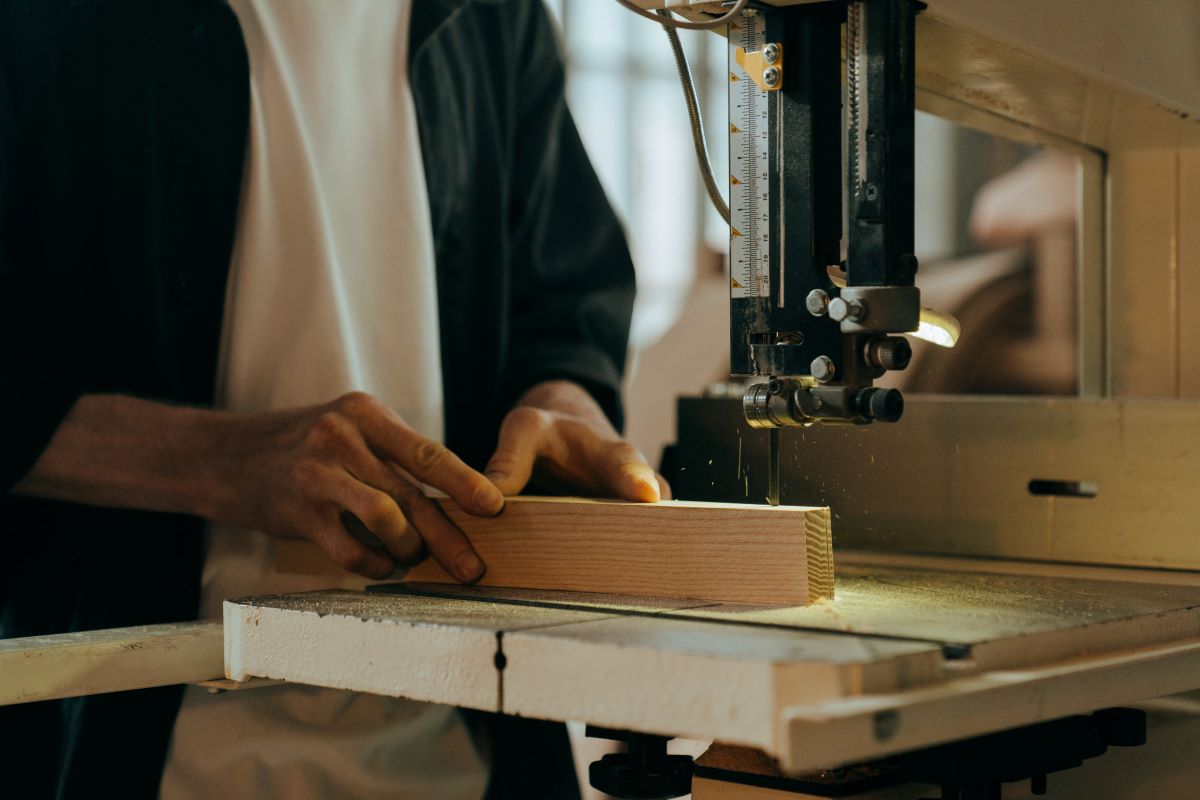Straightforward and efficient workflows are an essential part of manufacturing processes. They detail the jobs, who are responsible for them, and the steps required.
If a workflow in manufacturing is inefficient, it can cause expensive delays.
Let’s look at why and how improving manufacturing workflows increases efficiency, ultimately leading to higher profits.
What is a manufacturing workflow?
A workflow in manufacturing entails the steps to take to produce a particular product. Each step involves a specific team and tasks that result in a deliverable.
The main stages in a workflow in manufacturing involve:
- Product research.
- Supplier coordination.
- Manufacturing process.
- Quality assurance.
- Shipping logistics.
Most manufacturing workflows will include these phases, but other steps may be involved depending on the manufactured product.
Why does improving manufacturing workflows matter?
It’s essential to improve your manufacturing workflows to minimize profit loss.
Even if you’re producing the exact amount to meet demand, it doesn’t necessarily mean it’s as profitable as it can be. In fact, you may be making just enough to keep your business afloat year-on-year.
To truly maximize profits, you must have a manufacturing process that allows for a decent profit margin.
Reducing the time and cost it takes to produce a certain amount of products will increase the profit value of your total output.
So, let’s say a competitor is producing the same total output as your business and selling their product at the same price.
Even if your sales totals match, if your production process is more cost and time-effective than theirs, you’ll be making more money.
Why manufacturing workflows fail (and what to do about it)
There are a few simple reasons why a workflow in manufacturing may fail. Let’s look at some of those problems and their possible solutions.
Poor communication
One of the most common reasons for workflow inadequacies is poor communication.
You can use the best technology and still run into production bottlenecks and inefficiencies without proper communications standards.
The consequences of poor communication include:
- Potential misunderstandings.
- Low team morale.
- Decreased profits.
A solution to this problem is to simplify your communications protocols.
Consider diversifying the ways your team communicates with each other. Heavy reliance on emails may result in cluttered inboxes, and scheduling too many face-to-face meetings can result in wasted time.
Also, consider creating communication templates to speed up written requests, acknowledgments, or other records.
Inadequate planning
Rushing the planning phase without adequate research increases the chances of wasted time, effort, and costs.
It’s important to consider all the factors that play into a workflow in manufacturing before starting production.
A detailed overview of all the moving parts will decrease the chances of encountering a production blindspot.
When drafting up your plan:
- Make sure you collect as much information as possible.
- List all your employees, their roles, and what’s expected of them.
- List all deliverables spanning the entire manufacturing process, such as supplier requirements, manufacturing processes, quality control requirements, etc.
- Create a plan for when things go wrong. Because no matter how prepared you are, there is always a risk of delays, miscommunication, and other errors.
Workflow tunnel vision
Workflow managers sometimes only look at positive outcomes. In doing so, planning for possible issues is often overlooked.
Even with short workflows, many problems could arise due to poor communication or inadequate planning.
If a workflow in manufacturing is planned with no room to adapt, it will ultimately collapse.
Projects don’t always go according to plan, but having an adaptable workflow will minimize delays and ensure the project quickly gets back on track.
Manufacturing workflow obstacles
You can improve inefficient processes by implementing workflow management software.
Before considering a manufacturing workflow software solution, let’s look at some obstacles manufacturers should be aware of.
Poor workflow mapping
The purpose of workflow mapping is to document processes and provide a reference point and an overview of the steps needed to complete a process.
Mapping workflows can take time, but they’re an essential part of the health of a manufacturing company.
Invisible bottlenecks
Bottlenecks in production pipelines aren’t always blatantly obvious. Your current workflow may seem to be performing exactly how it should.
But with adequate research and better attention to detail, you can identify these bottlenecks and reduce the loss of productivity.
It’s crucial to perform routine maintenance checks anyway. This includes checking physical equipment for repairs and less tangible aspects like your communications processes.
Even if just one part of your workflow in manufacturing is defective, the rest of the process will be affected.
The law of amplification
It’s a common misconception that technology can solve all problems. But it can’t solve underlying issues in a workflow.
You may even worsen the problem by automating flawed processes.
The law of amplification says that using technology in a workflow process makes it more efficient. But applying technology to an inefficient process will make it even more inefficient.
So, technology amplifies the process, whether it’s efficient or not.
Before implementing any digital workflow software, manufacturers must first identify and fix workflow issues.
How to improve manufacturing workflow
You can improve each step in a manufacturing workflow through better project management or more advanced technology.
Let’s look at the different ways to simplify a workflow in manufacturing.
Review your existing workflow
As a company grows, so do the number of employees and the rate of its output production.
When a business scales, its workflows must follow. After all, the manufacturing workflow for a small business will likely not work for an enterprise-level company with more workers and increased production demand.
You must regularly review the manufacturing workflow to minimize production bottlenecks and maximize your resources.
Update processes and technology
Today, there is exponential growth in the technology sector. It’s not uncommon for certain software or hardware to become obsolete in just a few years.
When performing routine check-ups on your workflow processes, check if the technology you’re using is still up to current standards.
Commit to scheduled maintenance
It’s easy to fall into the mindset of “If it’s not broken, don’t fix it.” Some manufacturing companies may skip over maintenance checks because they think it’s a waste of time.
Even if the manufacturing process is seemingly successful, it’s still important to do routine check-ups. Issues in manufacturing processes aren’t always obvious and may require more scrutiny.
Train and educate employees
Hiring the most qualified employees from the get-go is just as important as fostering an environment of professional growth.
As a company grows, so does the required skill set of its employees.
Get feedback and note what skill sets your employees could improve on. Consider investing in training opportunities for your staff to boost productivity.
Aside from positively affecting your production process, allowing your employees to grow also improves workplace morale.
Organize the workspace
A disorganized workspace will slow the workflow down. Ensure your facility is organized and clean, especially before a new work day.
Arrange workstations efficiently so that the appropriate tools are nearby and it’s easy for employees to keep the area clean.
Maintain optimal inventory
Having too little inventory can lead to lower production output and decreased sales.
On the other hand, having too much inventory can lead to:
- Limited cash flow.
- Increased expenses.
- Wasted resources.
Maintain an optimal inventory by coordinating your purchasing schedule with your production output and keeping accurate and updated records.
Consider automating notifications when stock becomes too low or too high so you always know when to order more.
How digital workflows improve manufacturing operations
Digital workflows exist to make life easier for manufacturers and businesses in general. They eliminate manual processes, reduce paper transactions, and simplify operations.
On top of having all your workflows digitized, they can also be automated, accessed, and managed in one place.
Workflows in manufacturing that you can digitize and automate include:
- Payment processing.
- Inventory management.
- Production planning.
- Quality control.
- Work orders.
- Distribution management.
These processes require a wide range of workflows to ensure continuous production and minimal downtime. You could improve all of these through a digital workflow.
Key takeaways
Workflow automation can minimize the steps employees take to finish a job. Always evaluate which processes technology could solve before implementing any software.
Ensure it will enhance efficiency, not hinder it.
Once you’ve decided to automate your manufacturing workflows through software, the next step is finding the right management tool.
Method CRM is a great solution that helps manufacturers automate every process, from sales to operations. It’s easy to use and fully customizable to your specific manufacturing workflows and processes.
Method will drastically increase productivity by simplifying time-consuming processes, making sure your business is always ahead of the game.
To boost efficiency and automate your workflows, consider integrating with Method CRM. See how Method helped a shipping container company’s revenue double in just three years below.
Workflow in manufacturing FAQs
What is a workflow process?
A workflow process refers to a series of tasks or activities that you must complete to achieve a specific outcome.
What are the three basic components of workflow?
The three basic components of a workflow are input, transformation, and output. Input entails the material required to complete a step. Transformation is a detailed set of rules that determine how the input materials are used. Output is the final product.
What is the purpose of a workflow?
The purpose of a workflow is to lay the work out clearly for employees so they can complete jobs efficiently. A carefully planned and detailed workflow will improve the efficiency of business processes. It also ensures all team members are on the same page.
Watch Method CRM’s demo to learn what it can do for your business!
Image credit: Cottonbro via Pexels






